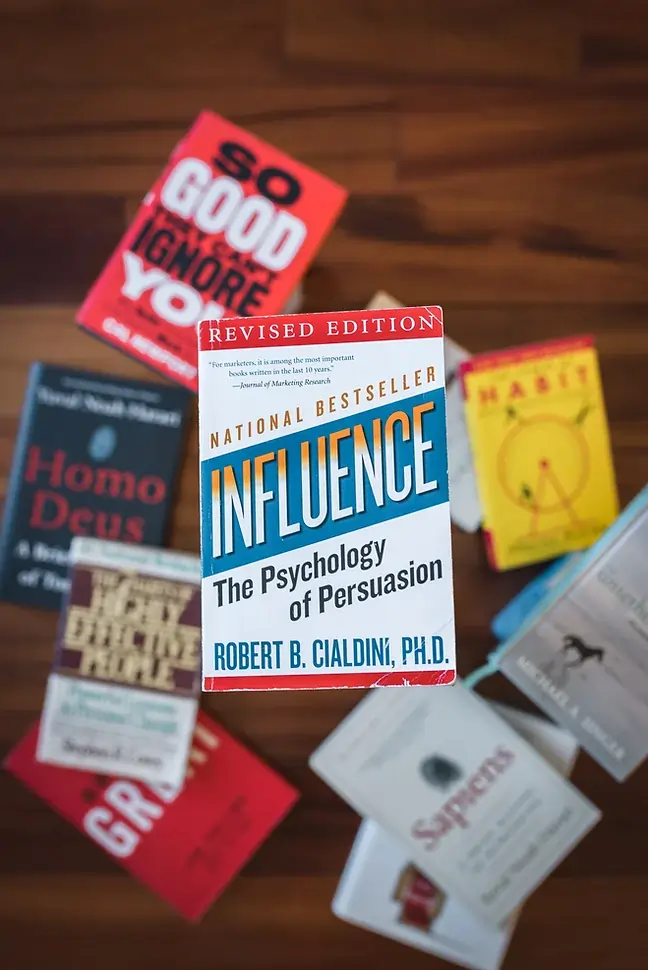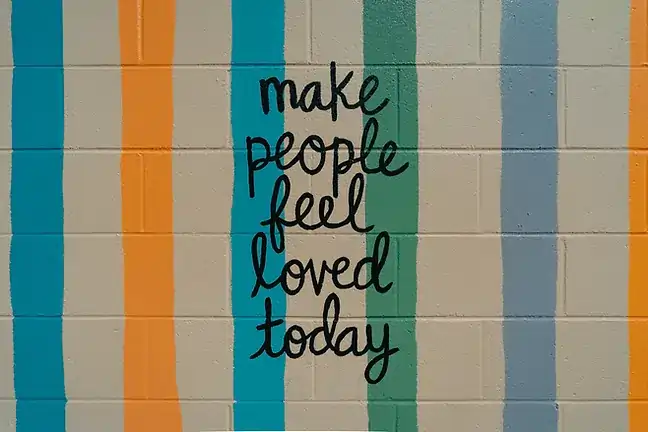Conflict resolution is an important skill for individuals and organizations to possess. It is essential for the success of relationships, both personal and professional. Learning how to resolve conflicts effectively helps to ensure that disagreements are handled constructively and productively.
In this blog post, we will explore the different strategies and techniques for successful conflict resolution. We will look at the different methods for addressing conflicts in a way that is respectful of all parties involved and leads to a positive outcome.

What is conflict resolution?
Conflict resolution is the process of resolving disputes or disagreements between individuals or groups in a peaceful, fair, and constructive manner. Conflicts can arise in a variety of situations, such as personal relationships, business, or workplace interactions, or in broader social, political, or international contexts.
Conflict resolution involves a series of steps to address the underlying issues and find a solution that meets the needs of all parties involved.
The first step is to identify the root causes of the conflict. This involves listening to all sides of the dispute and understanding the underlying issues, interests, and values that are driving the conflict.
Once the underlying issues are identified, the next step is to explore possible solutions. This involves brainstorming, exploring different options, and considering the potential benefits and drawbacks of each solution. It is important to involve all parties in this process and to consider their perspectives and ideas.
After exploring potential solutions, the next step is to choose a solution that is mutually acceptable to all parties involved. This involves compromising or finding a solution that meets the core interests of both parties. It is important to ensure that the chosen solution is fair, equitable, and sustainable over the long term.
Effective communication is essential throughout the conflict resolution process. This involves actively listening to all parties involved, clarifying misunderstandings, and expressing one's own needs and concerns constructively and respectfully. Communication should also be honest and transparent, with all parties being open about their intentions, goals, and expectations.
In most cases, it is helpful to involve a neutral third party to facilitate the conflict resolution process. This includes a coach, facilitator, mediator, or arbitrator who helps to manage the conversation and ensures that everyone has a fair and equal voice.
How can Conflict resolution be used in your company?
Effective conflict resolution is essential for any company or organization to maintain a positive and productive work environment. Conflicts arise in any workplace, whether it be between employees, departments, or with customers, and it is important to have a clear understanding of how to handle conflicts in a way that is fair, respectful, and effective.
Here are some ways that you can use conflict resolution in your company:
Develop a clear conflict resolution policy
Start by creating a clear conflict resolution policy that outlines the steps to be taken when conflicts arise. The policy should be communicated to all employees and should include information on how to report conflicts, the steps that will be taken to address conflicts, and the expected behaviors of employees when conflicts arise.
Encourage open communication
Open communication is key to effective conflict resolution. Encourage employees to share their concerns and ideas constructively and respectfully and provide them with the tools and resources needed to do so. This includes regular team meetings, one-on-one meetings with managers, or an anonymous suggestion box.
Provide conflict resolution training
Provide training to employees on conflict resolution techniques and strategies. This includes effective communication skills, negotiation skills, and mediation skills. This helps employees to identify and resolve conflicts before they escalate and lead to more serious issues.
Foster a culture of collaboration
Encourage collaboration and teamwork among employees. This helps to build positive relationships and reduce the likelihood of conflicts arising. Create opportunities for employees to work together on projects or initiatives and celebrate their successes.
Utilize a neutral third party
In most cases, it is helpful to bring in a neutral third party to help resolve conflicts. This includes a coach, facilitator, mediator, or arbitrator who helps to manage the conversation and ensure that everyone has a fair and equal voice.
Follow-up and monitor progress
After a conflict has been resolved, it is important to follow up and monitor progress to ensure that the solution is working for all parties involved. This includes regular check-ins, feedback sessions, or evaluations.

How do leadership and negotiation influence conflicts and conflict resolution?
Leadership and negotiation play crucial roles in conflicts and conflict resolution.
Effective leaders understand the importance of negotiation skills and utilize them to resolve conflicts in a manner that is fair, constructive, and beneficial for all parties involved.
Leadership is a key factor in conflict resolution because it involves setting the tone for the workplace and creating a culture of open communication, respect, and collaboration. Leaders who prioritize conflict resolution and encourage their employees to do the same are likelier to have a positive and productive work environment. They also help to prevent conflicts from escalating and becoming more severe issues.
When conflicts arise, leaders need to use their negotiation skills to find a solution that meets the needs of all parties involved. Negotiation involves a process of communication and compromise, where both parties work together to find a mutually acceptable solution. Effective negotiation requires active listening, empathy, and the ability to see things from the other party's perspective.
Leaders who are skilled negotiators can help to de-escalate conflicts and find a solution that is beneficial for all parties involved. They identify the underlying issues and work with the parties to find a solution that addresses those issues. Doing so, help to create a more positive and productive work environment, which can lead to greater job satisfaction and retention.
However, effective negotiation and conflict resolution require more than just leadership skills. It also involves a deep understanding of the specific situation and context of the conflict and the interpersonal dynamics involved. It may require creative solutions beyond traditional approaches and the ability to adapt to changing circumstances.
Emotional awareness is a key factor for conflict resolution and conflict management!
Emotional awareness is a crucial factor for effective conflict resolution and management. Conflicts can be emotionally charged situations, and without the ability to recognize and manage emotions, it can be difficult to navigate through the conflict constructively and productively.

Emotional awareness refers to the ability to recognize and understand one's own emotions, as well as the emotions of others. It involves being able to regulate one's emotions and respond appropriately to the emotions of others. Emotional awareness is essential for conflict resolution and management because it allows individuals to understand and manage the underlying emotions driving the conflict.
In conflicts, emotions can run high, and individuals may become defensive, angry, or resentful. Emotional awareness allows individuals to recognize these emotions and respond constructively and helpfully to resolve the conflict. It also allows individuals to communicate effectively and empathetically with the other party, leading to better outcomes. Here are some ways in which emotional awareness can be utilized for conflict resolution and management:
Recognize your emotions
The first step to emotional awareness is to recognize your feelings. Take a moment to reflect on your feelings and how your emotions may impact the conflict. This will help you to regulate your emotions and respond more constructively.
Identify the emotions of others
In conflicts, it is important to recognize the other party's emotions. This helps to understand their perspective and respond in a way that is empathetic and constructive.
Communicate effectively
Emotional awareness helps individuals to communicate effectively in conflicts. This involves active listening, expressing oneself clearly, and being empathetic to the other party's emotions.
Regulate your emotions
Emotional regulation is a key component of emotional awareness. This involves recognizing when your emotions are becoming overwhelming and taking steps to regulate them. This includes taking a break from the conversation, taking a few deep breaths, or utilizing relaxation techniques.
Seek help when necessary
In some situations, conflicts may be too emotionally charged to resolve on your own. Seeking the help of a neutral third party, such as a conflict coach or facilitator, helps manage the emotions of the conflict and find a constructive resolution.
What are common (but often not the best) conflict resolution strategies?

Conflict resolution strategies are essential tools that individuals use to resolve conflicts effectively and productively. Several different conflict resolution strategies are available, each with its strengths and weaknesses. Here are some of the best conflict resolution strategies:
Collaborative Problem-Solving: This conflict resolution strategy involves working together to find a mutually beneficial solution to the problem. It involves active listening, creative problem-solving, and compromise.
Compromise: This conflict resolution strategy involves finding a middle ground between two opposing views. Both parties give up something to reach a mutually acceptable solution.
Competition: This conflict resolution strategy involves a win-lose mentality, where one party tries to come out ahead of the other. This strategy is best used when there is a clear power imbalance and one party has more power than the other.
Avoidance: This conflict resolution strategy involves avoiding the conflict altogether. It can be effective when the competition is minor or the timing is unsuitable to address the conflict.
Accommodation: This conflict resolution strategy involves one party giving in to the other's demands. It can be an effective short-term solution but may not be sustainable in the long run.
Mediation: This conflict resolution strategy involves a neutral third party helping to facilitate the resolution of the conflict. The mediator helps the parties communicate effectively, identify the underlying issues, and find a mutually acceptable solution.
Arbitration: This conflict resolution strategy involves a neutral third party making a binding decision on the conflict. It is often used in legal disputes and can be effective when the parties cannot agree on their own.
In choosing the best conflict resolution strategy, it is important to consider the specific context and the needs of the parties involved. Collaborative problem-solving and compromise are generally considered the most effective strategies for resolving conflicts because they prioritize communication, collaboration, and finding a mutually acceptable solution.
However, arbitration or competition may be necessary when a power imbalance or legal issues are involved.
Why is engaging, listening, and verbalizing feelings, views, and needs in conflicts better?
Engaging, listening, and verbalizing feelings, views, and needs are key to effective conflict resolution. Engaging with each other in a conflict, listening actively, and expressing their feelings and needs leads to better understanding, improved communication, and a more constructive resolution.
Here are some reasons why it is better to engage, listen, and verbalize feelings, views, and needs in conflicts:
Increased Understanding: When individuals engage in a conflict, making assumptions about the other person's intentions or motivations can be easy. However, by actively listening and verbalizing one's feelings and needs, both parties better understand each other's perspectives. This increased understanding leads to more productive communication and more effective conflict resolution.
Improved Communication: Effective communication is key to resolving conflicts. Engaging with each other and actively listening helps create a safe communication space. Verbalizing one's feelings and needs calmly and respectfully helps to prevent misunderstandings and defensiveness. This, in turn, leads to more productive communication and a greater likelihood of finding a mutually beneficial solution.
Reduced Tension: Conflicts can be emotionally charged, and tensions can run high. Engaging, listening, and verbalizing feelings and needs help to reduce this tension. When both parties feel heard and understood, it leads to a more relaxed and positive environment for resolving the conflict.
Increased Empathy: Empathy is a key component of conflict resolution. By engaging with each other, actively listening, and verbalizing feelings and needs, individuals can develop greater empathy for each other's perspectives. This leads to a more collaborative approach to resolving the conflict.
Better Outcomes: When individuals engage, listen, and verbalize feelings, views, and needs in a conflict, it leads to better outcomes. Both parties are more likely to find a mutually beneficial and sustainable solution. This helps to prevent future conflicts and build stronger relationships.

In conclusion, engaging, listening, and verbalizing feelings, views, and needs are essential to effective conflict resolution. By doing so, individuals better understand each other's perspectives, improve communication, reduce tension, develop greater empathy, and achieve better outcomes. It requires an openness to communication and a willingness to understand the other party's point of view, but the benefits can be significant. By prioritizing these strategies, individuals can resolve conflicts productively and constructively.
Why you must keep an eye on the boundaries of the involved parties
In conflict resolution, the role of boundaries is often overlooked.
However, boundaries are critical in shaping the conflict resolution process and determining its outcome. Boundaries are essential for creating a sense of safety and respect in any relationship, whether personal or professional.
Boundaries are guidelines or limits that define acceptable behavior and what is not.

Personal values, beliefs, and experiences often shape them. Boundaries can be physical, emotional, mental, or spiritual. In any relationship, it is important to establish and respect boundaries to prevent conflict and ensure healthy communication. When boundaries are not respected, conflicts can arise.
For example, if a coworker consistently interrupts you during meetings or disregards your input, this leads to frustration and resentment. By establishing and communicating clear boundaries, such as setting expectations for how meetings should be conducted or how feedback should be given, conflicts can be prevented or resolved more quickly.
Boundaries influence the conflict resolution process in terms of how individuals approach the conflict. When individuals have strong boundaries, they are more likely to conflict with a sense of self-respect and self-worth. This leads to more assertive communication and a greater willingness to compromise, as individuals feel confident in their needs and values.
On the other hand, when boundaries are weak or undefined, individuals may feel more vulnerable and defensive during conflicts. This can lead to more aggressive or passive communication as individuals struggle to assert their needs and boundaries. In these situations, it can be helpful to strengthen personal boundaries through self-reflection and boundary-setting exercises.
In addition to personal boundaries, it is also important to establish boundaries within the conflict resolution process itself. This includes setting clear expectations for how the conflict will be addressed, such as using a neutral mediator or establishing ground rules for communication. By establishing clear boundaries, all parties involved should feel safe and respected, which leads to a more constructive and productive conflict resolution process.
How conflict coaching can help you to resolve your conflict
Conflict coaching is a process of supporting individuals in managing conflicts effectively. It involves one-on-one sessions where a professional coach helps individuals develop skills and strategies to manage conflicts. Conflict coaching is a useful tool in personal and professional settings where individuals may face conflicts they cannot resolve independently.
The main goal of conflict coaching is to help individuals improve their conflict resolution skills. Conflict coaching differs from therapy or counseling, typically addressing underlying emotional or psychological issues. Conflict coaching is more action-oriented and helps individuals develop practical skills to address specific conflicts.
The conflict coaching process typically involves several stages. The first stage is the assessment stage, where the conflict coach assesses the individual's conflict resolution skills and current conflict situation. The coach will ask questions to understand the nature of the conflict, the parties involved, and the individual's goals for the coaching process.
The next stage is the goal-setting stage, where the coach and the individual develop specific goals for the coaching process. The goals may include developing better communication skills, learning to manage emotions during conflicts, or developing strategies for resolving a conflict.
The coaching sessions themselves involve a combination of skills training, role-playing, and feedback. The coach will provide the individual with effective tools and strategies for managing conflicts. The individual will then practice these skills in role-playing exercises with the coach. The coach will provide feedback and guidance to help the individual improve their skills.
Conflict coaching can be useful in various settings, including workplaces, families, and schools.
In the workplace, conflict coaching helps employees develop the skills to manage conflicts with coworkers or customers effectively. Conflict coaching helps managers develop the skills to manage conflicts within their teams.
In families, conflict coaching helps parents and children develop better communication skills and resolve conflicts peacefully. Conflict coaching helps siblings learn how to manage conflicts with each other effectively.
In schools, conflict coaching helps students develop the skills to manage conflicts with their peers and teachers. Conflict coaching can also be useful for teachers who may face conflicts with parents, colleagues, or administrators.
In conclusion, conflict coaching is valuable for individuals who want to improve their conflict resolution skills. Conflict coaching is a one-on-one process where a trained conflict coach helps individuals develop practical skills and strategies to manage conflicts effectively. Conflict coaching can be useful in various settings, including workplaces, families, and schools. If you are struggling with a conflict and need help managing it, consider seeking a conflict coach to support you in developing the skills you need to resolve conflicts effectively.

How you can use the win-win strategy
The win-win strategy for conflict resolution is a method that seeks to find a solution that benefits all parties involved in a conflict. It is a collaborative approach that requires active communication, listening, and compromise. The goal is to find a resolution that satisfies everyone's needs and interests instead of just one party getting their way.
The win-win strategy is based on the belief that conflicts arise because of unmet needs, interests, or values. The key to resolving conflicts is identifying these needs and interests and finding a solution to them. The win-win strategy requires a positive attitude towards the other party and a willingness to work together to find a solution.
The first step in the win-win strategy is to identify the underlying needs and interests of all parties involved. This involves active listening and open communication to understand each other's perspectives. It is important to ask questions and clarify misunderstandings to ensure everyone is on the same page.
Once the needs and interests are identified, the next step is brainstorming potential solutions. It is important to generate multiple options and consider the pros and cons of each solution. The solutions should be evaluated based on how well they meet the needs and interests of all parties involved.
After evaluating the potential solutions, the parties should work together to negotiate and finalize a solution that satisfies everyone's needs and interests. The solution should be clear, specific, and realistic and include actions that each party will take to implement it.
The win-win strategy is beneficial for several reasons. First, it allows all parties to feel heard and understood, reducing defensiveness and increasing cooperation. Second, it is a collaborative approach that promotes teamwork and mutual respect. Finally, it is a sustainable solution that addresses all parties' underlying needs and interests.
However, implementing the win-win strategy requires time, effort, and a willingness to compromise. It is important to approach the conflict with an open mind and a positive attitude toward finding a solution that benefits everyone. The win-win strategy is not always easy, but it is a powerful tool for resolving conflicts and promoting positive relationships.
In conclusion
Conflict is a natural part of human interaction and can arise in any situation with differing opinions, goals, or values.
Conflict resolution, conflict coaching, and conflict management are three approaches that can be used to address and manage conflicts.
Conflict resolution is finding a solution to a conflict that satisfies all parties involved. It requires active listening, open communication, and a willingness to compromise. The goal of conflict resolution is to identify each party's underlying needs and interests and find a solution that addresses them. This can be done through negotiation, mediation, or other forms of collaborative problem-solving. Conflict resolution is often used in situations where the conflict has escalated and requires formal intervention.
Conflict coaching is when a professional coach helps an individual or group manage a conflict. The coach works with the individual or group to identify the underlying issues and goals, and to develop strategies for addressing and resolving the conflict. Conflict coaching is often used in situations where there is a potential for conflict, but it has not yet escalated to a significant level. The goal of conflict coaching is to help individuals or groups to manage conflict constructively, and to prevent it from escalating into a more serious situation.
Conflict management is the process of preventing conflicts from arising or addressing conflicts proactively. This can be done through various methods, including communication and team-building exercises, conflict resolution training, and developing policies and procedures for managing conflicts. Conflict management is often used when conflicts are common, such as in a workplace or community setting. The goal of conflict management is to create an environment where conflicts can be addressed constructively and to prevent them from escalating into more serious situations.
All three approaches – conflict resolution, conflict coaching, and conflict management – require effective communication, active listening, and a willingness to compromise. They also need a positive attitude toward finding a solution that benefits everyone involved.
Effective communication is key to resolving conflicts. It is important to listen actively and to express oneself clearly and respectfully. This involves using "I" statements instead of "you" statements, acknowledging the other person's point of view, and avoiding blame or judgment.
Active listening is also essential for conflict resolution, conflict coaching, and conflict management. This involves focusing on what the other person is saying, asking questions to clarify their position, and acknowledging their emotions and feelings. Active listening can help build trust and understanding and reduce defensiveness and hostility.
A willingness to compromise is also important for conflict resolution, conflict coaching, and conflict management. This involves finding common ground and working towards a solution that meets the needs and interests of all parties involved. Compromise can involve making concessions but should not include sacrificing one's core values or principles.
In conclusion, conflict resolution, conflict coaching, and conflict management are all important approaches for managing conflicts constructively. They require effective communication, active listening, and a willingness to compromise. By addressing conflicts positively and proactively, individuals and groups build stronger relationships and create a more productive and harmonious environment.
If you have any questions, feel free to contact us!
harald@griffox.com
